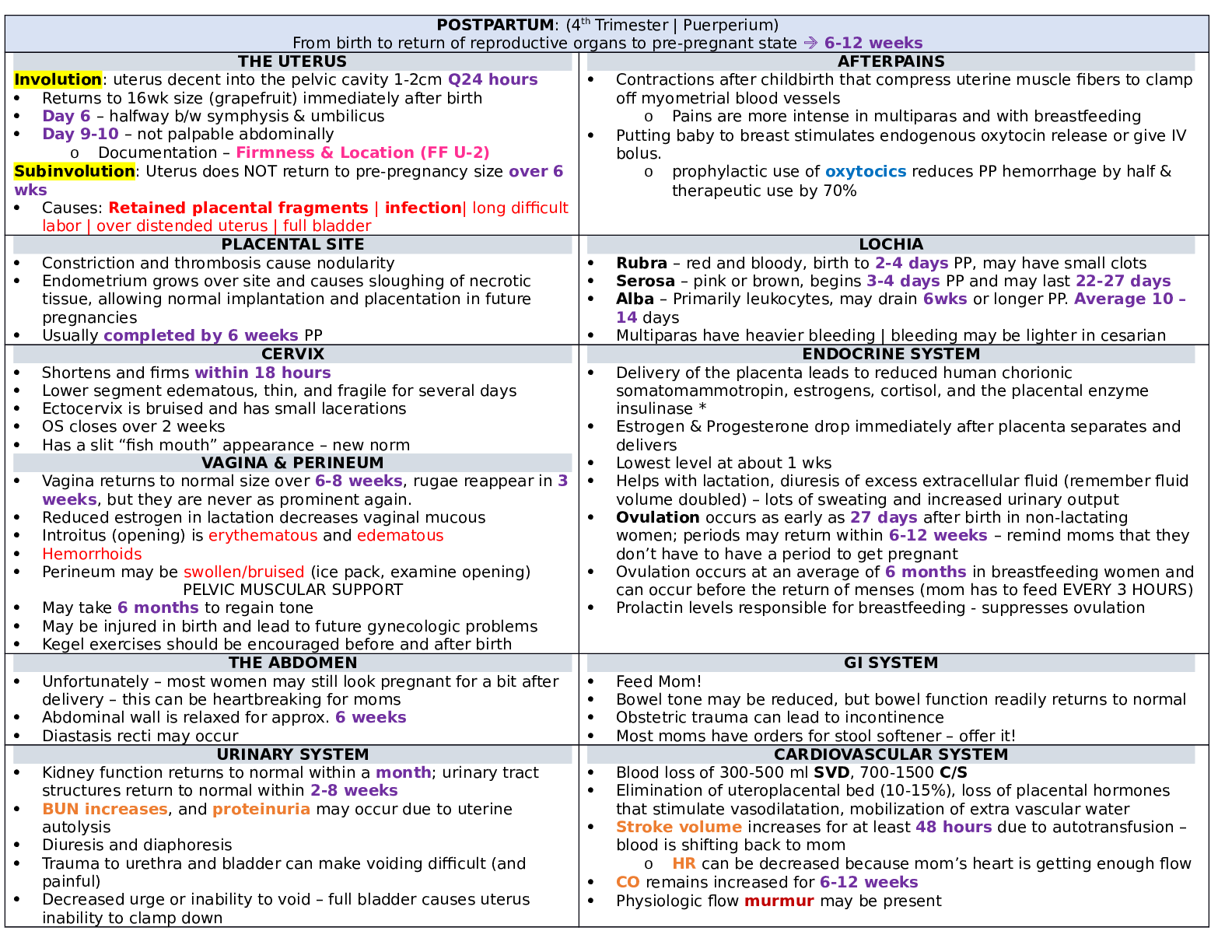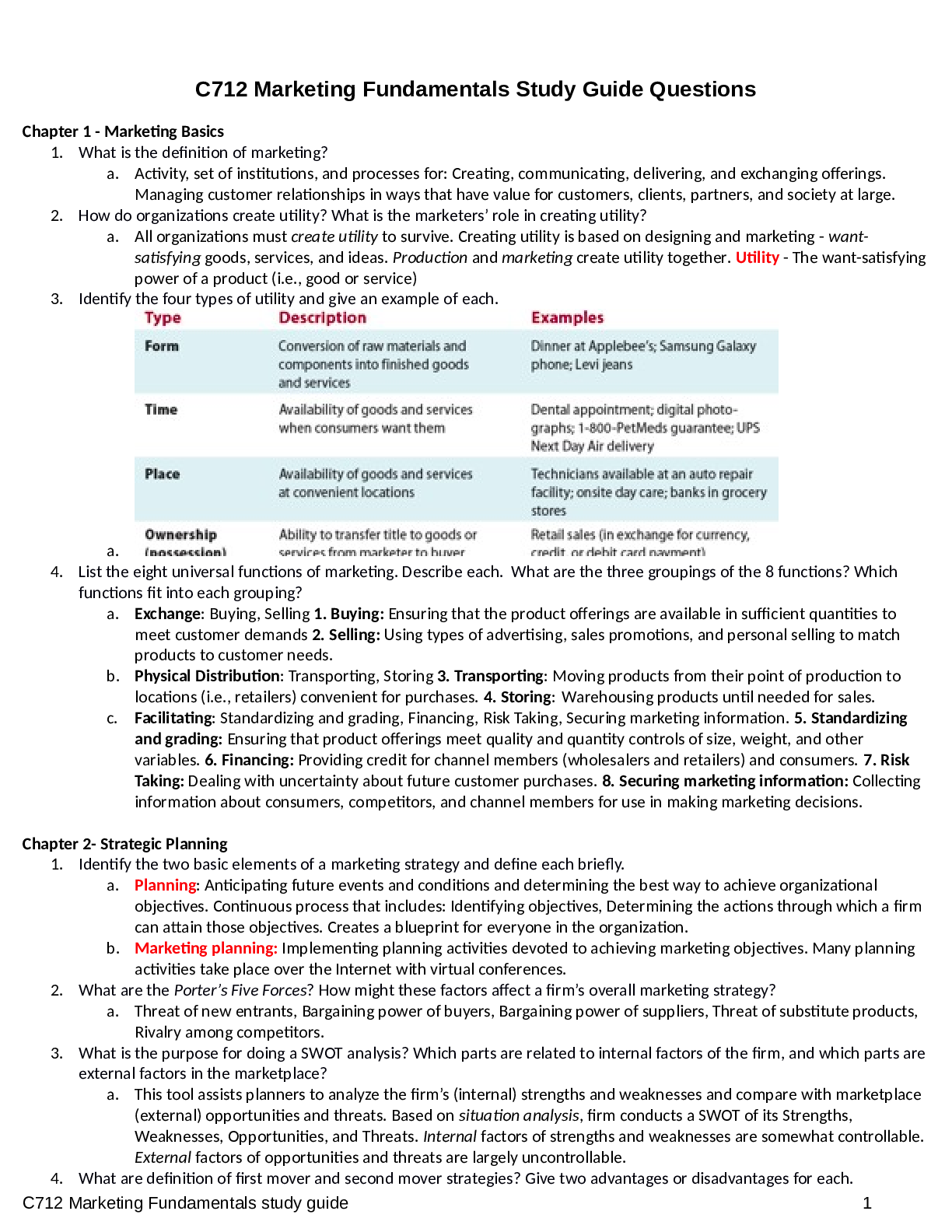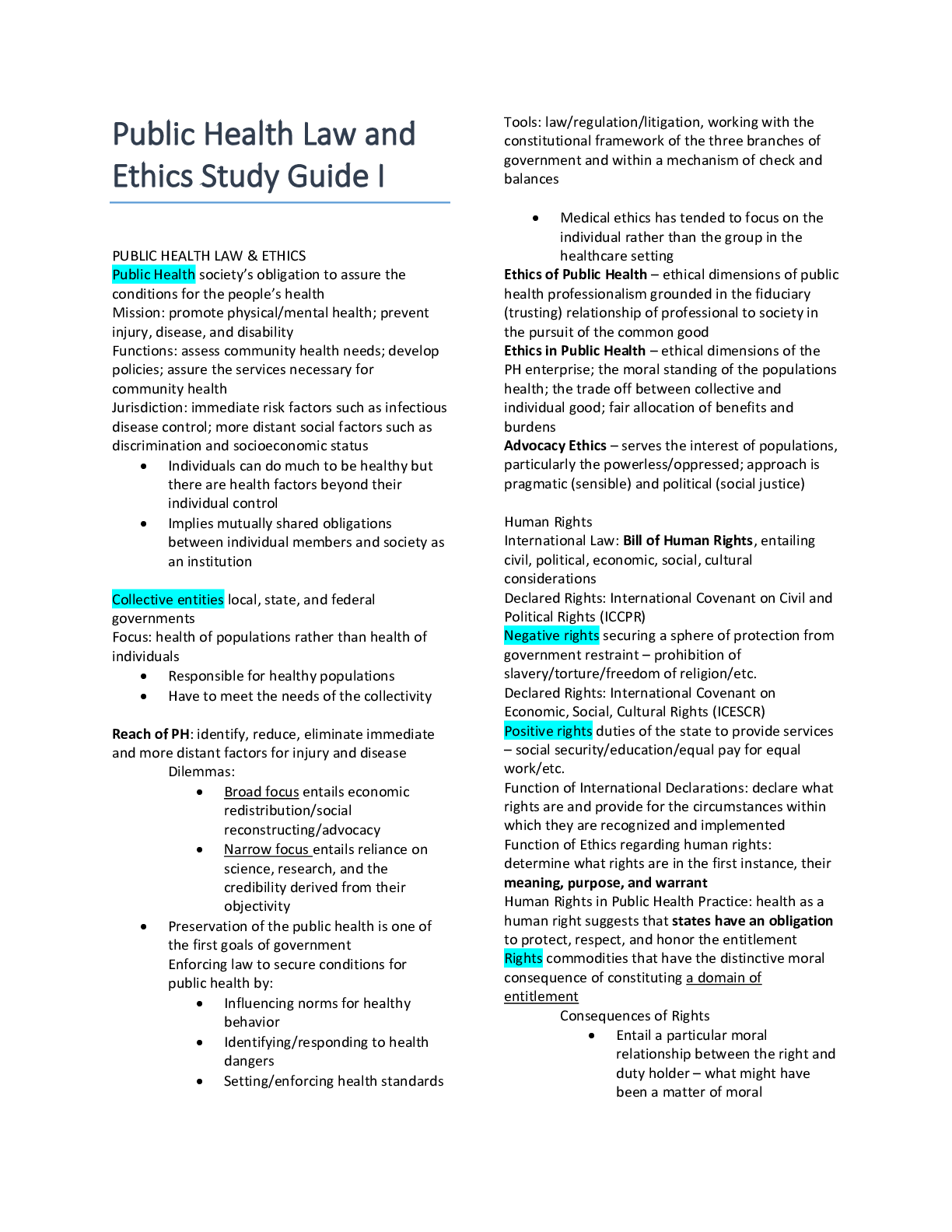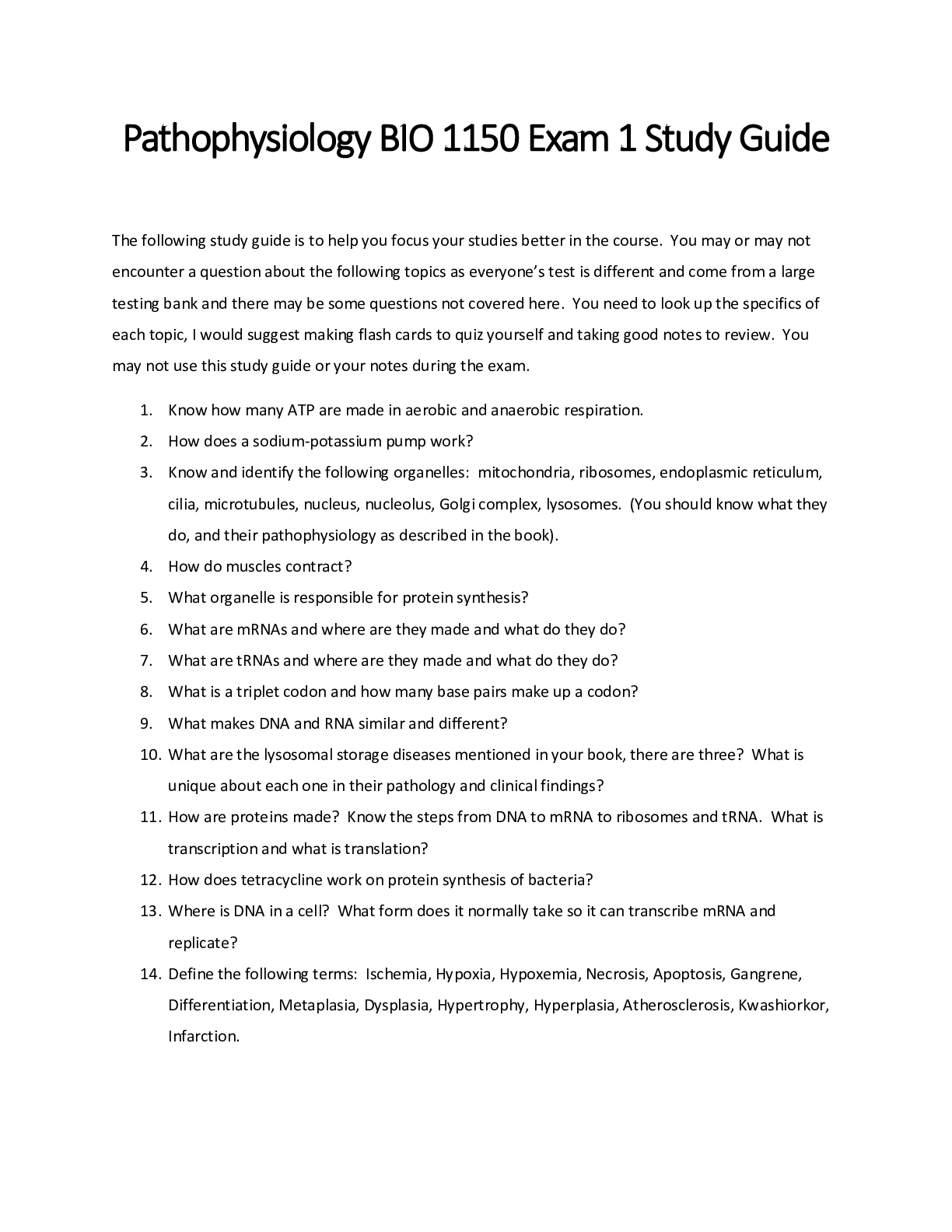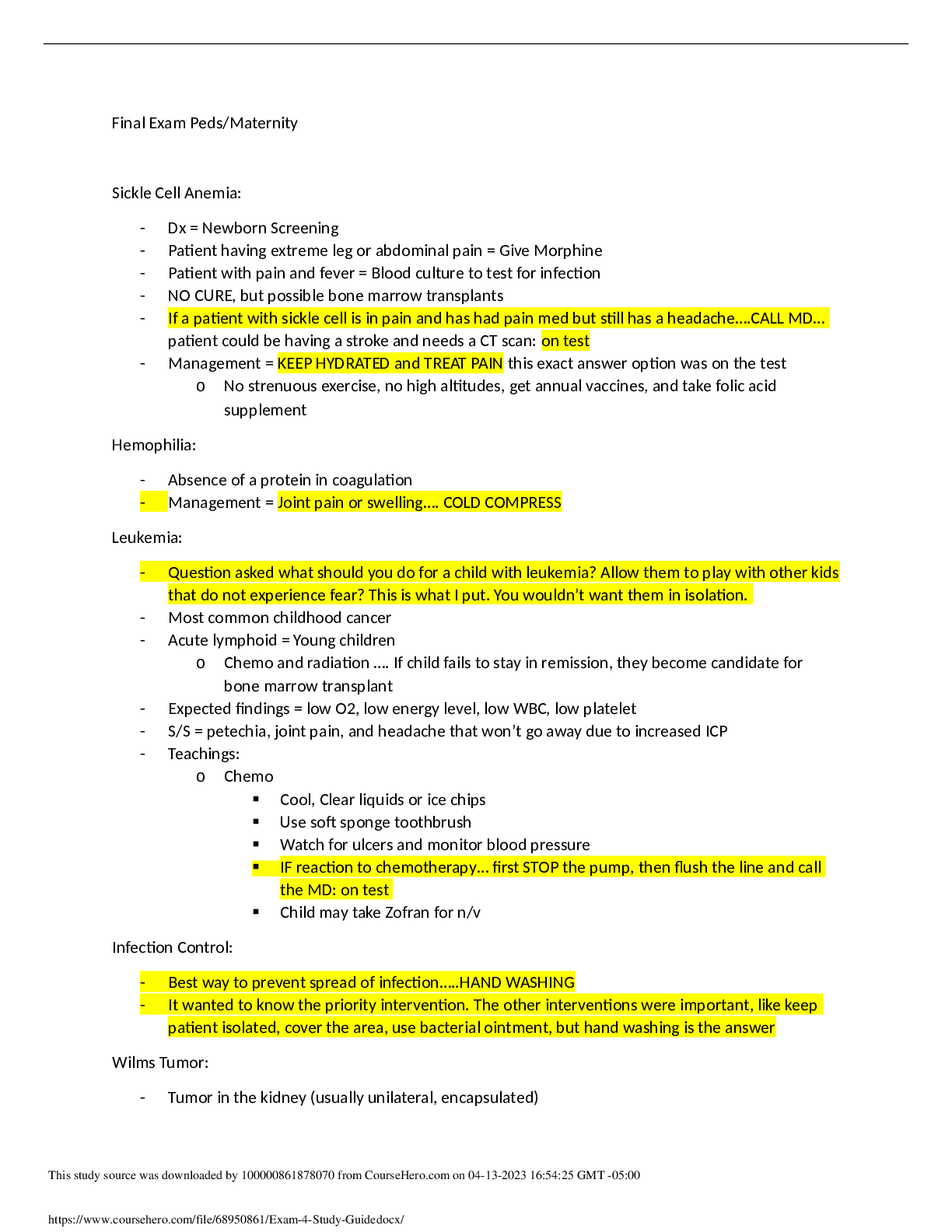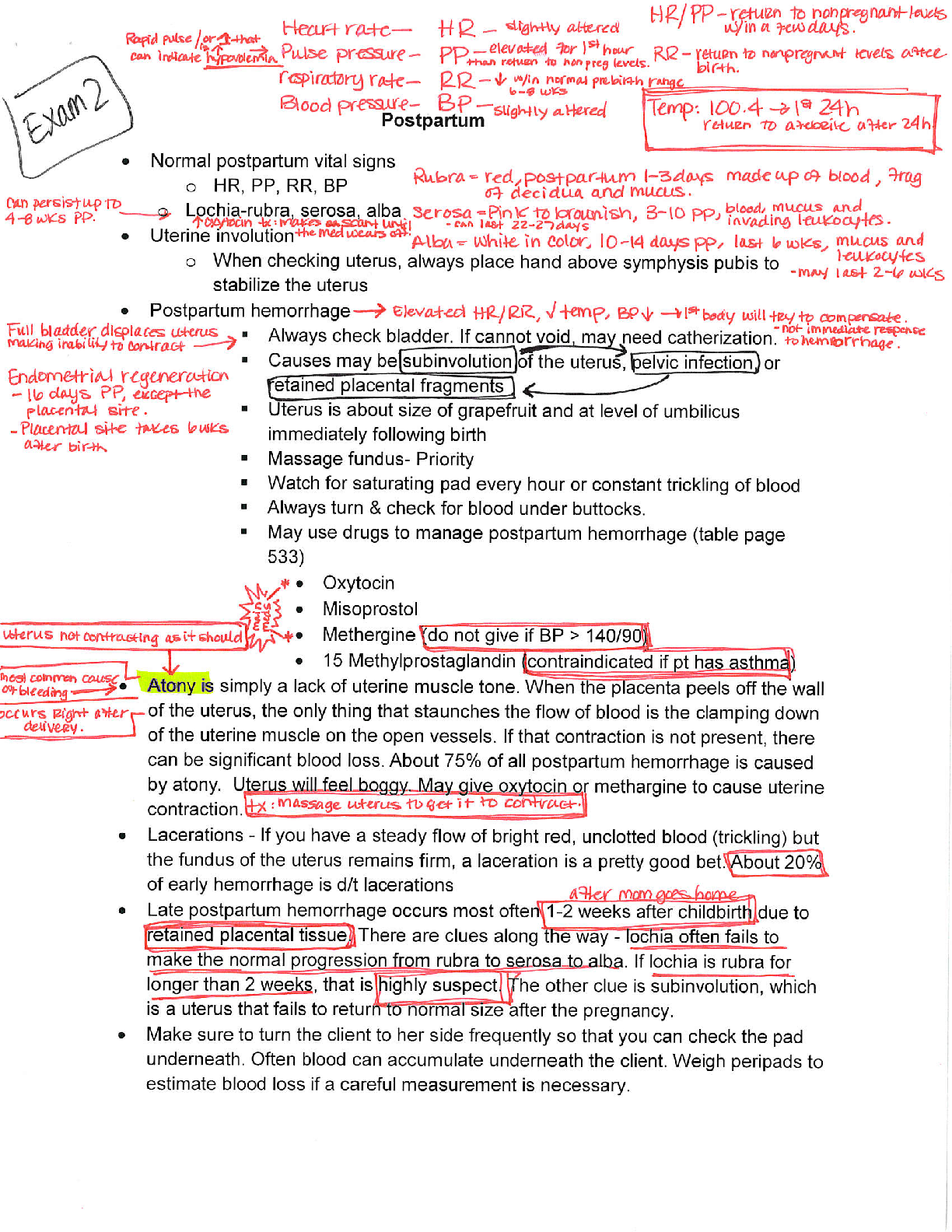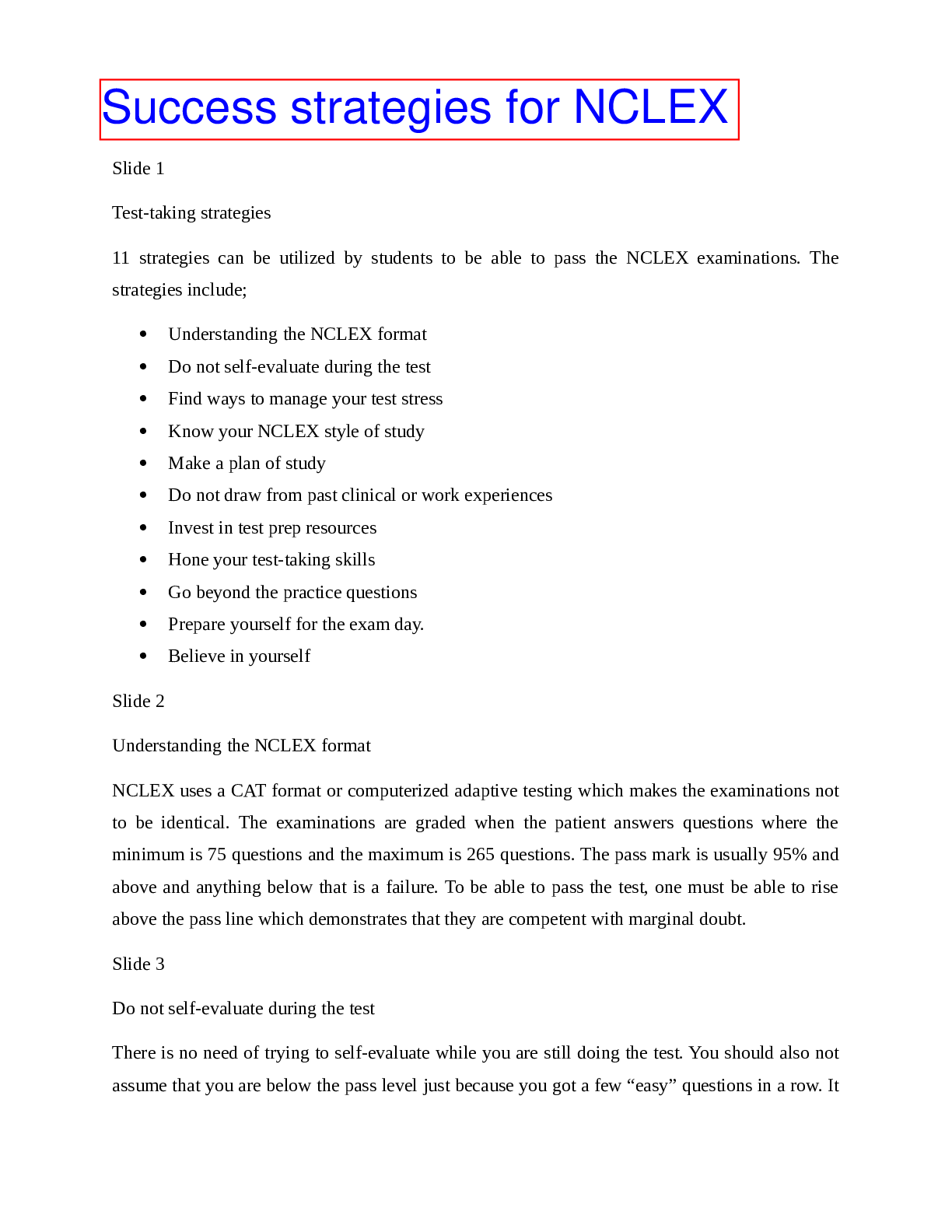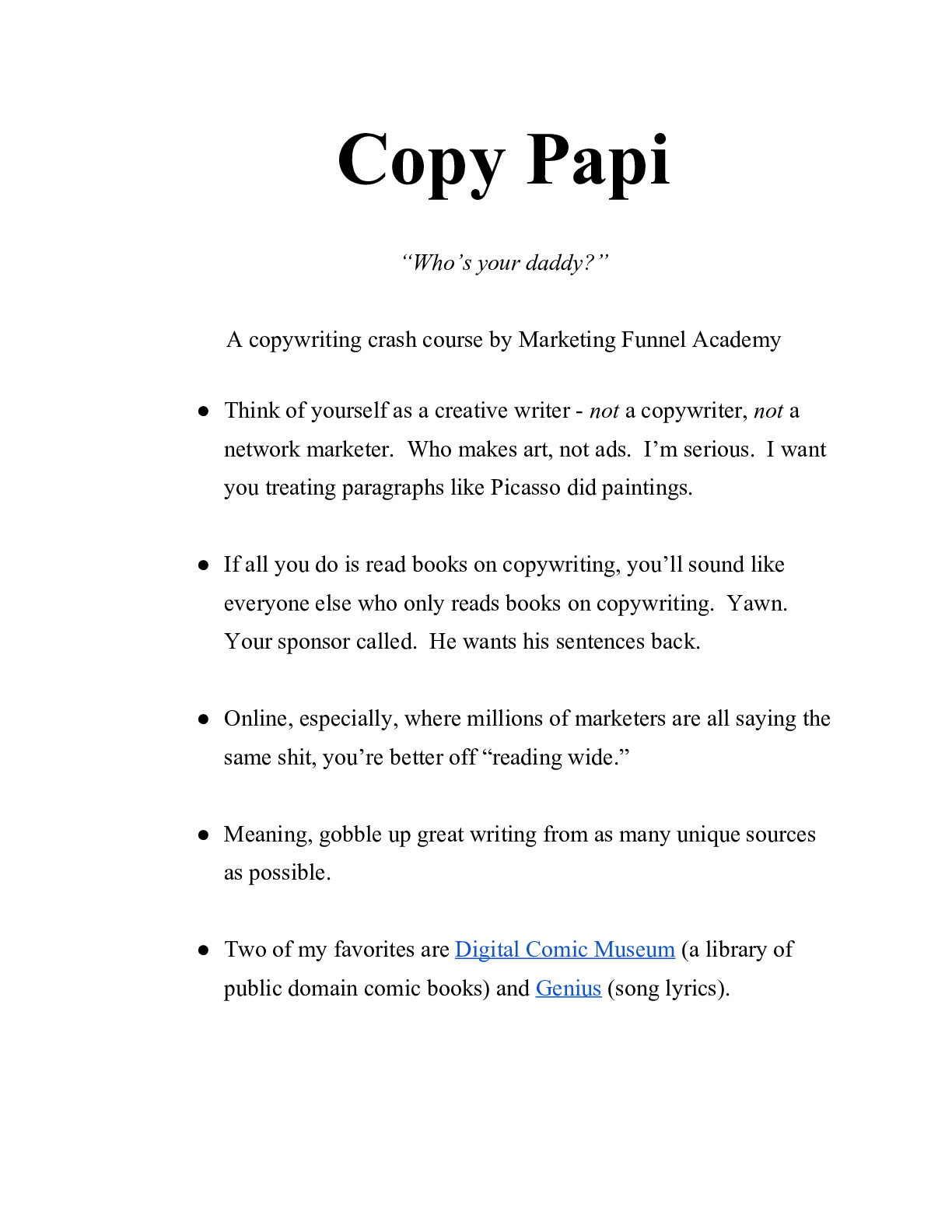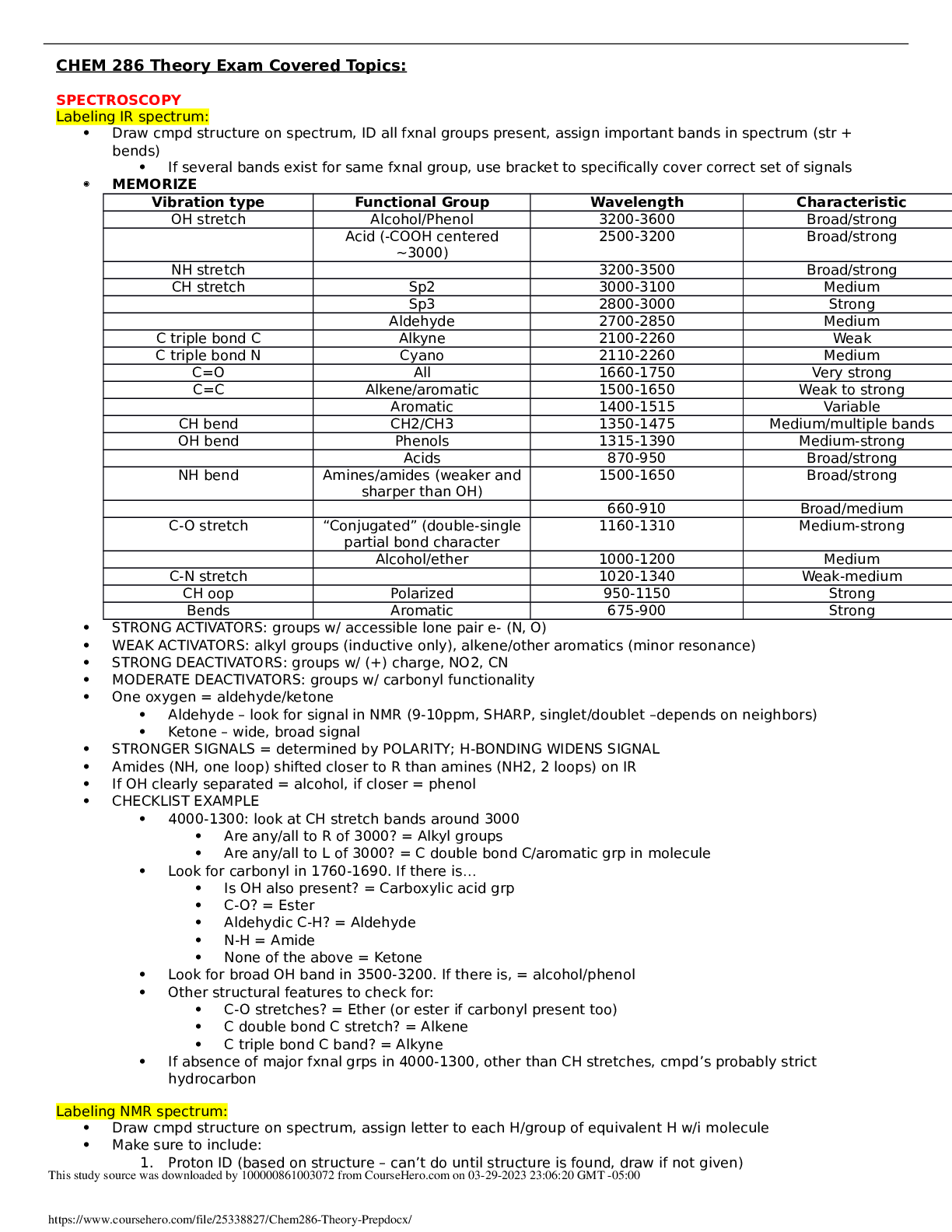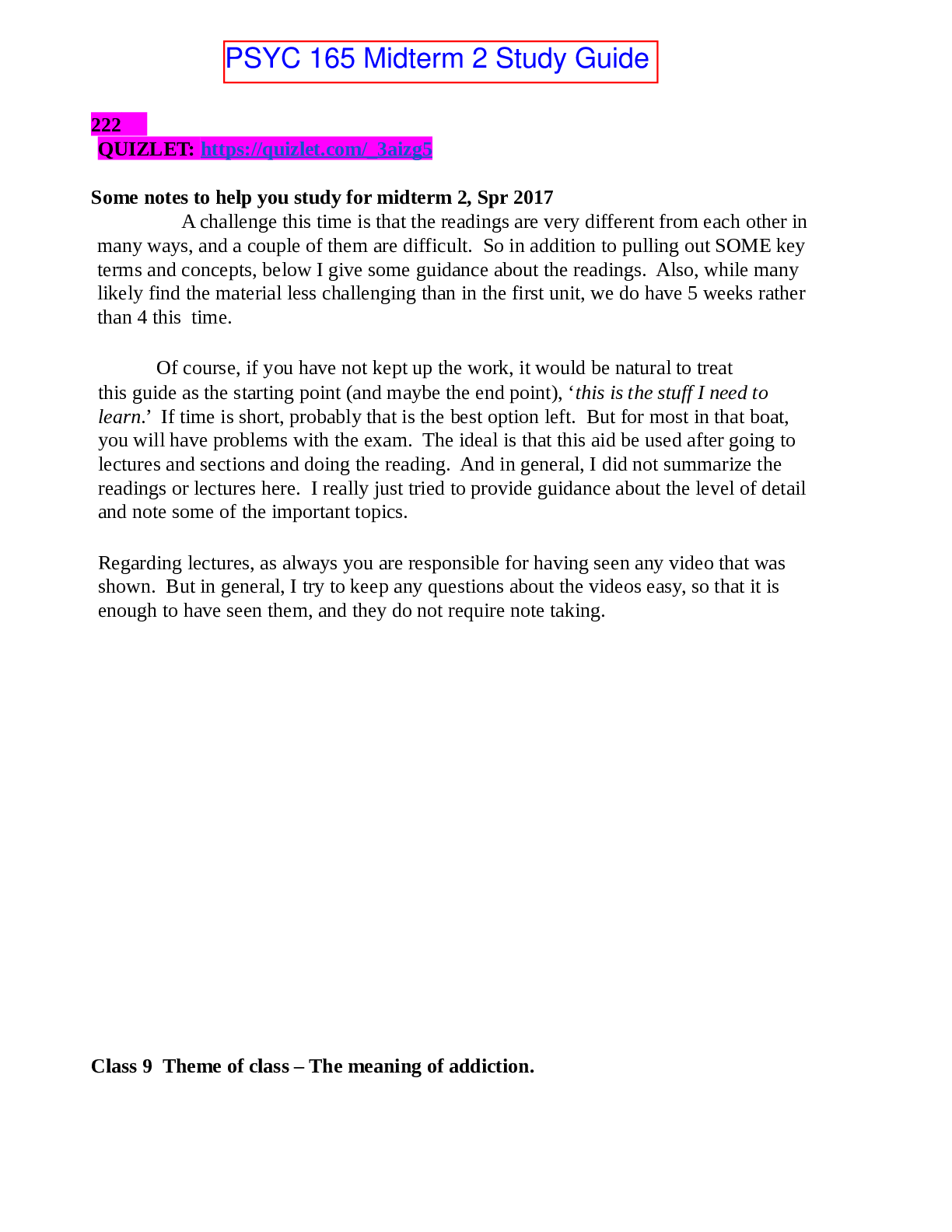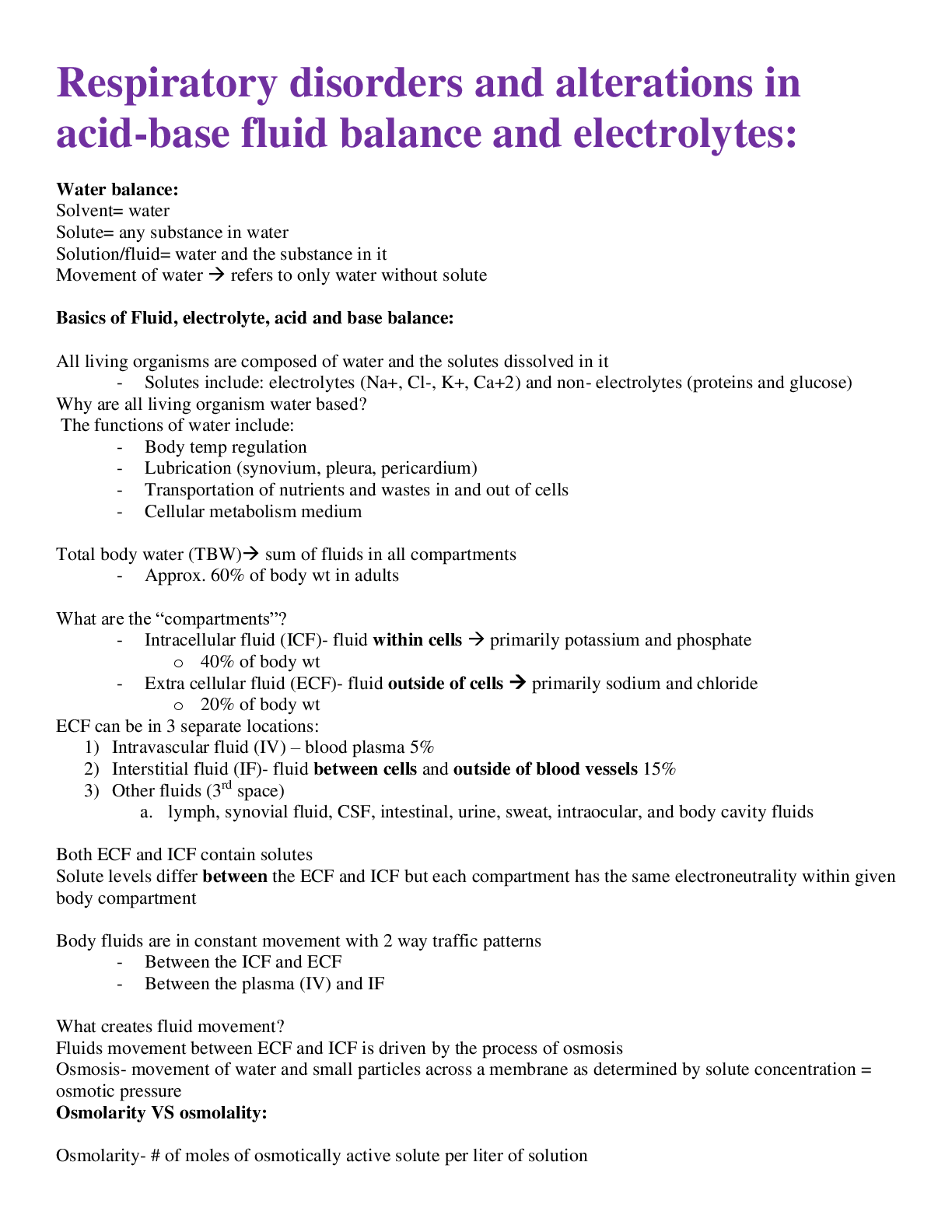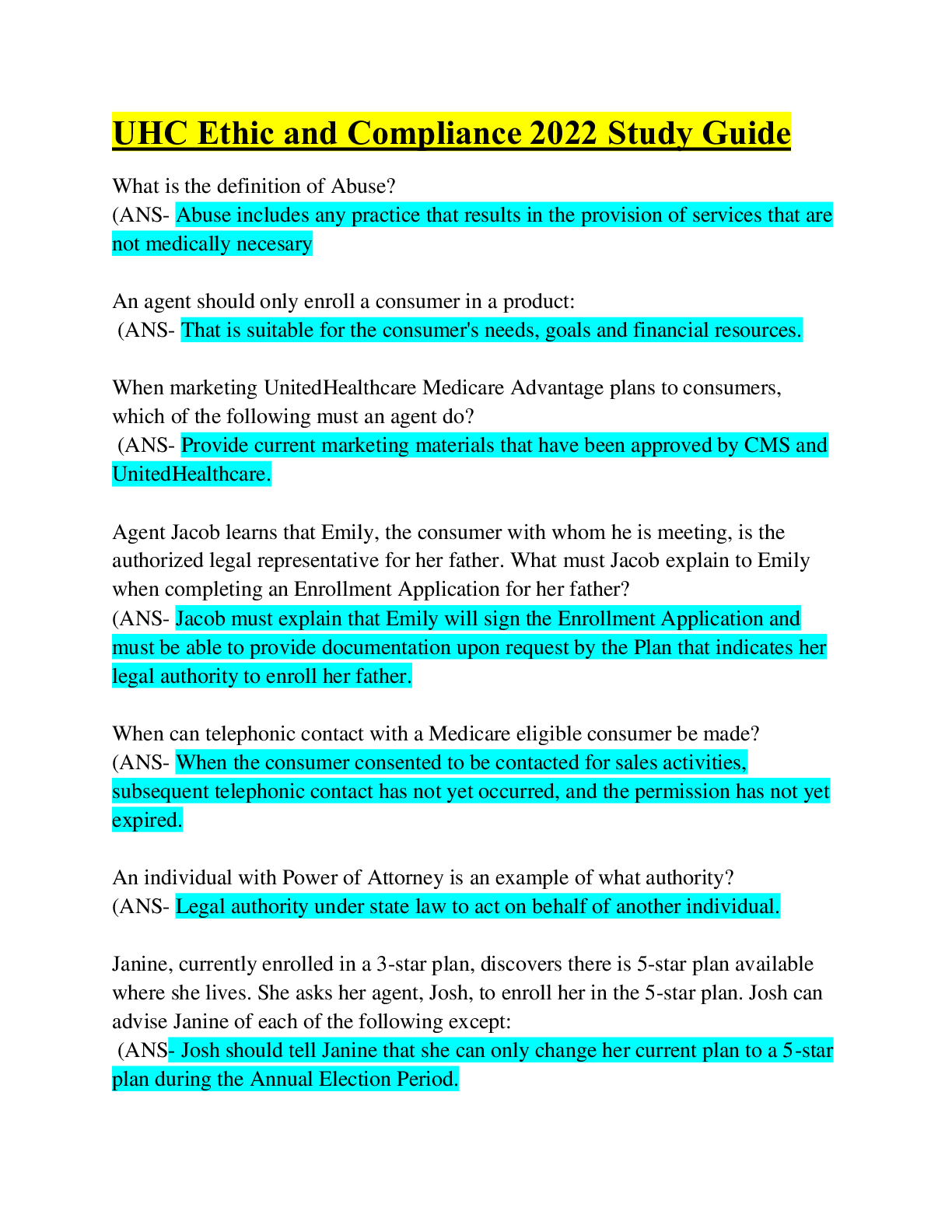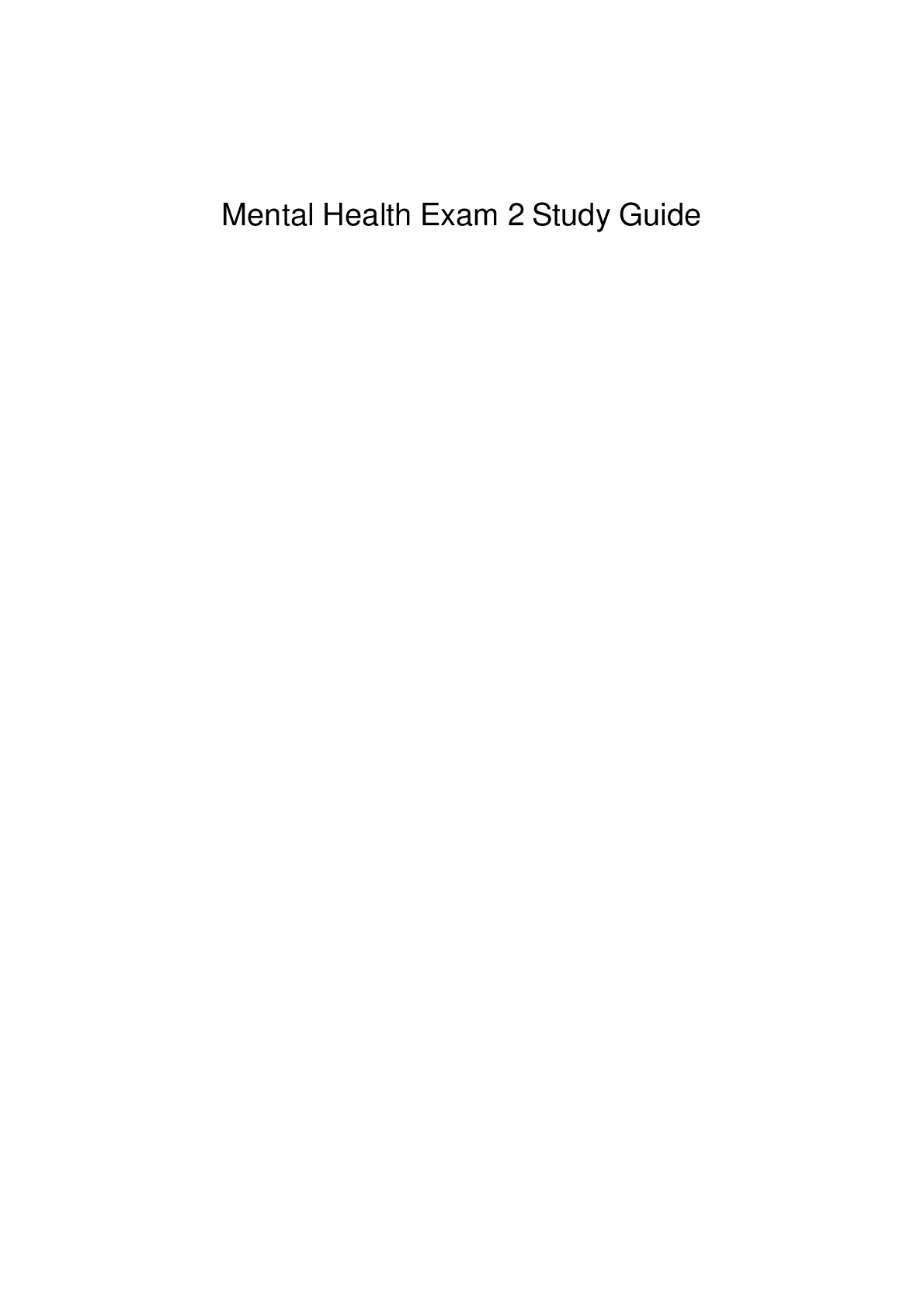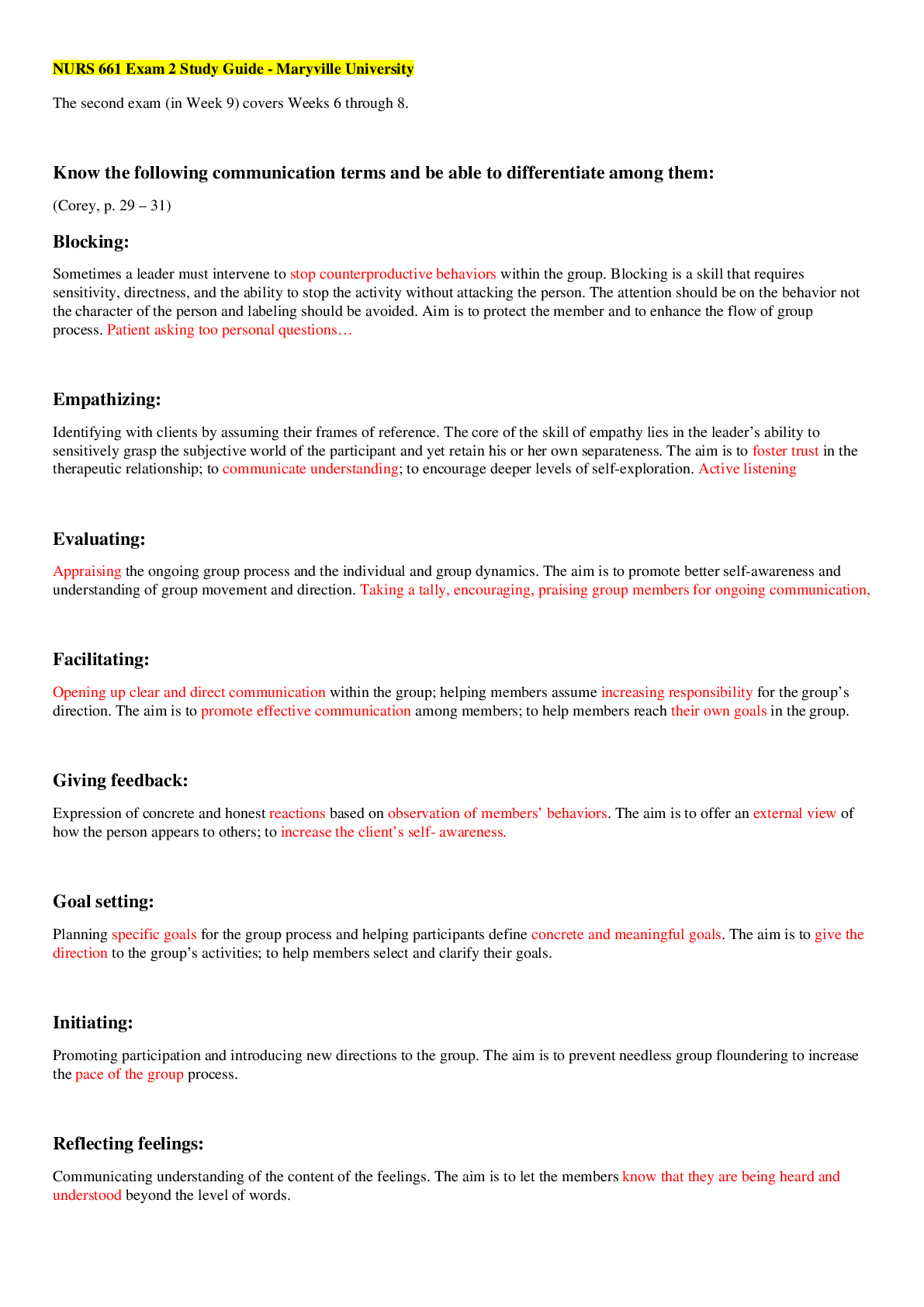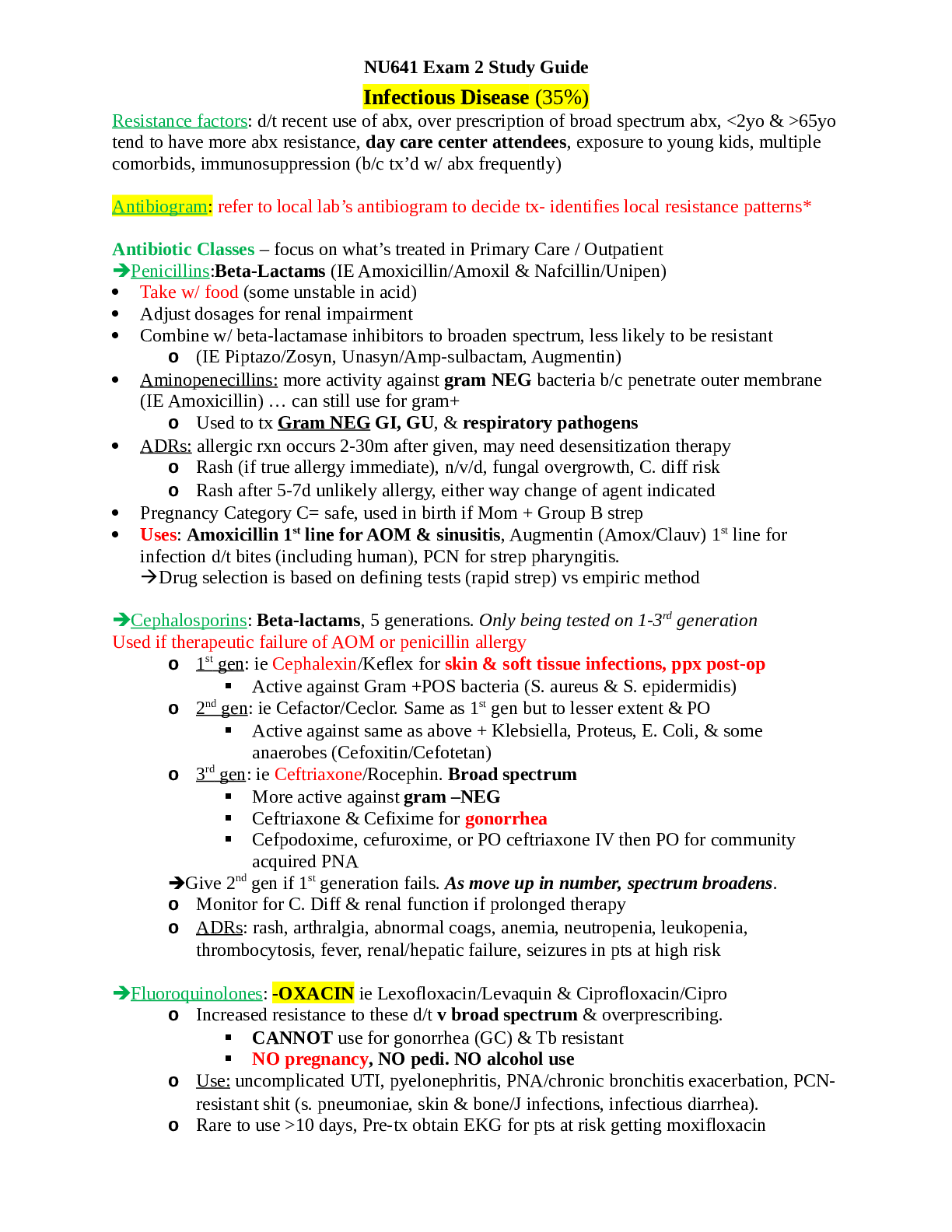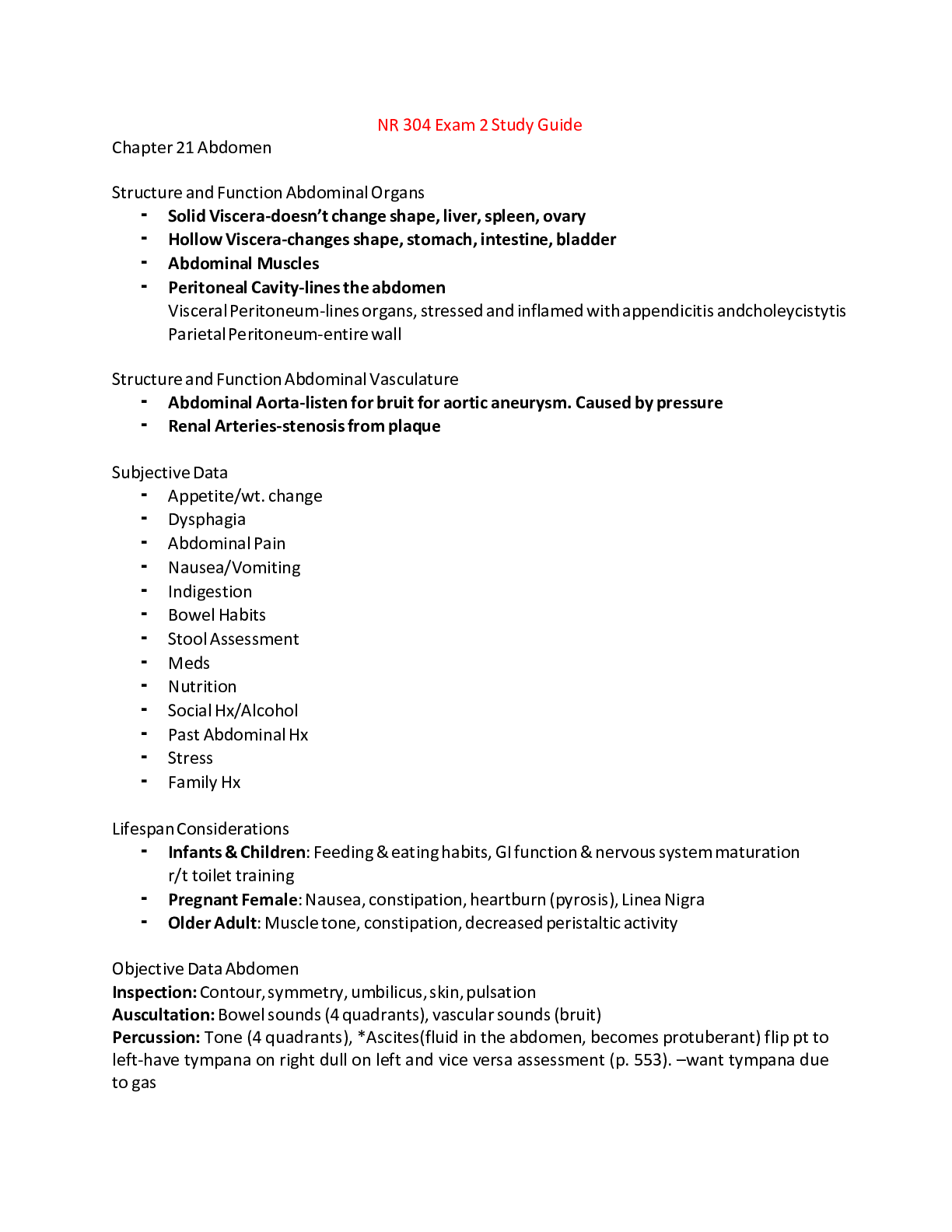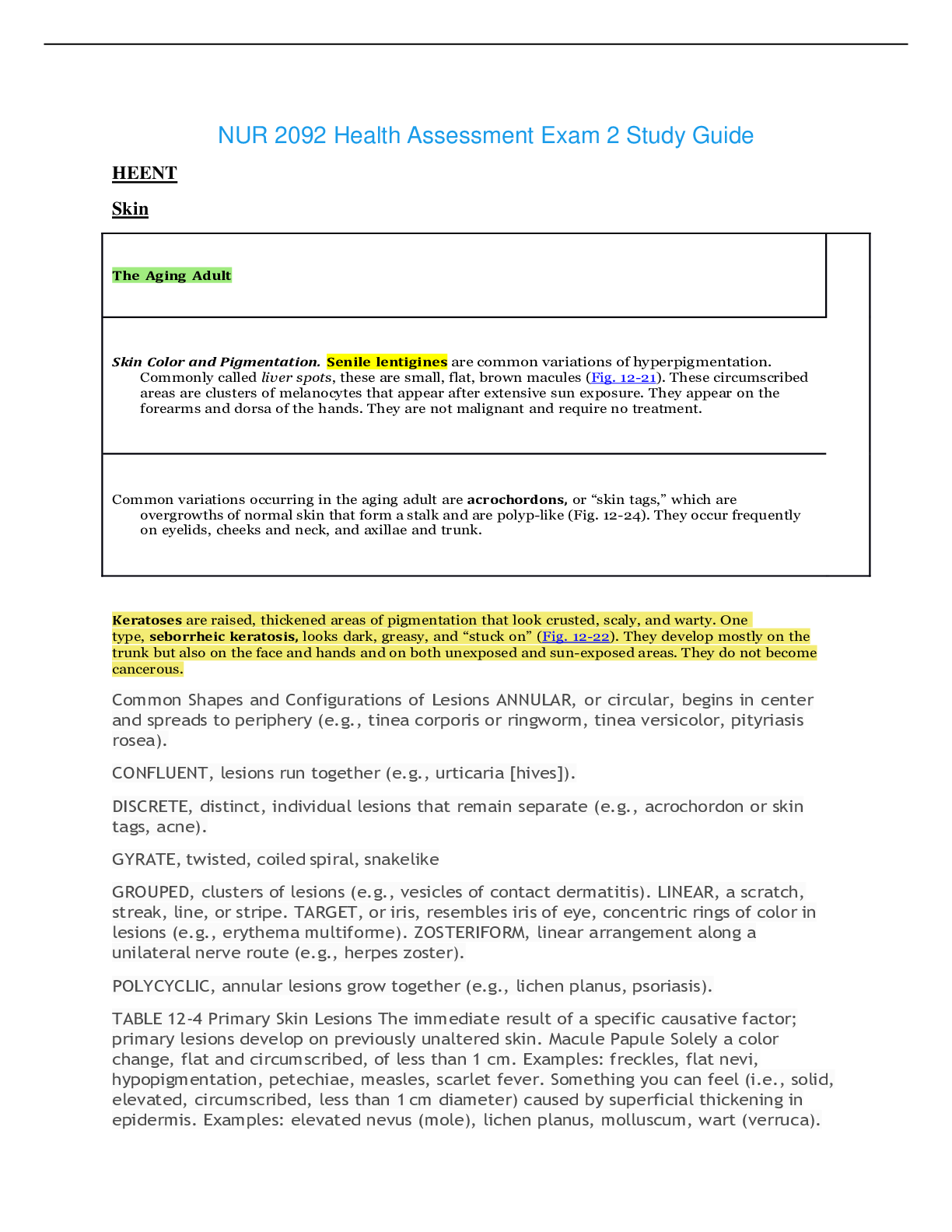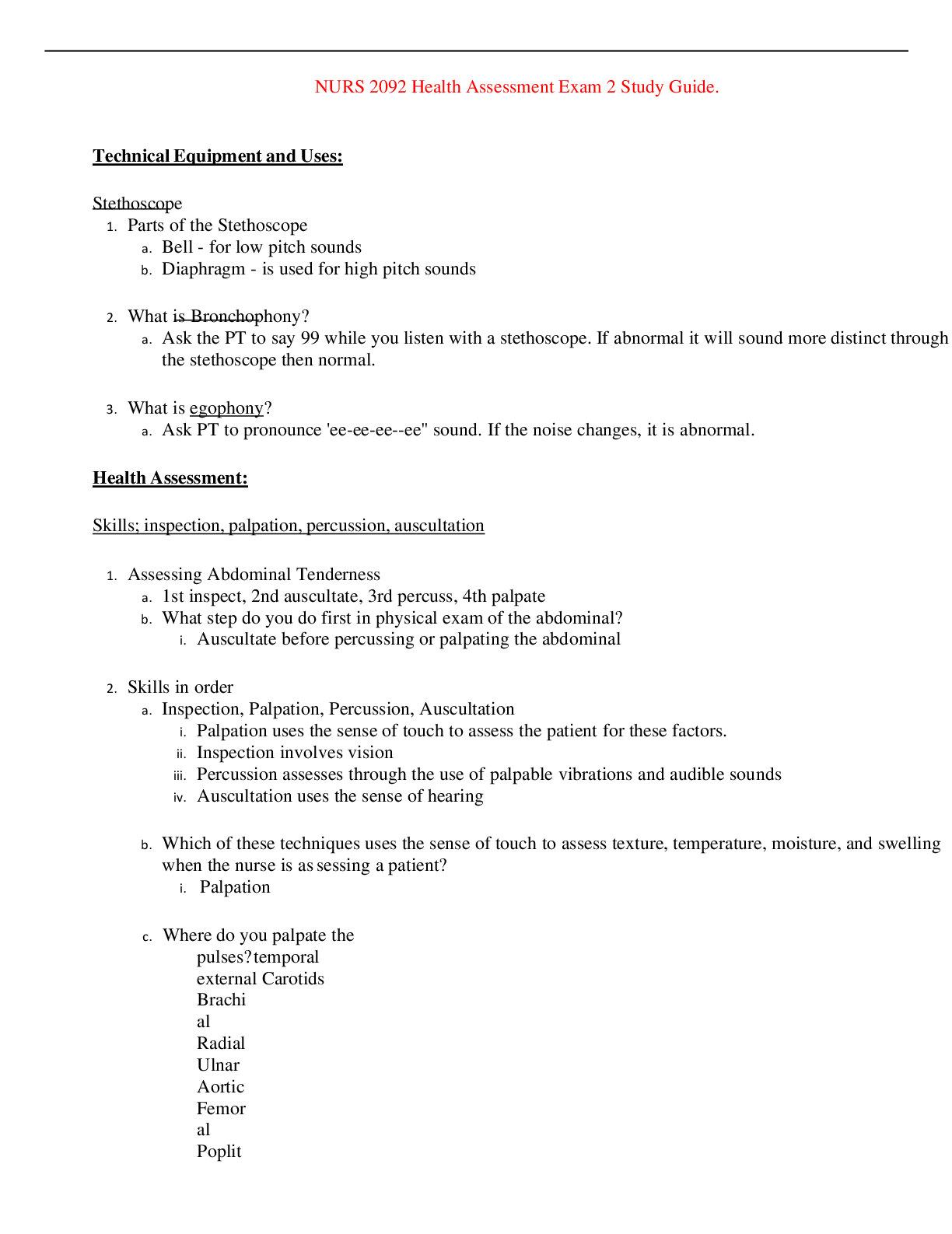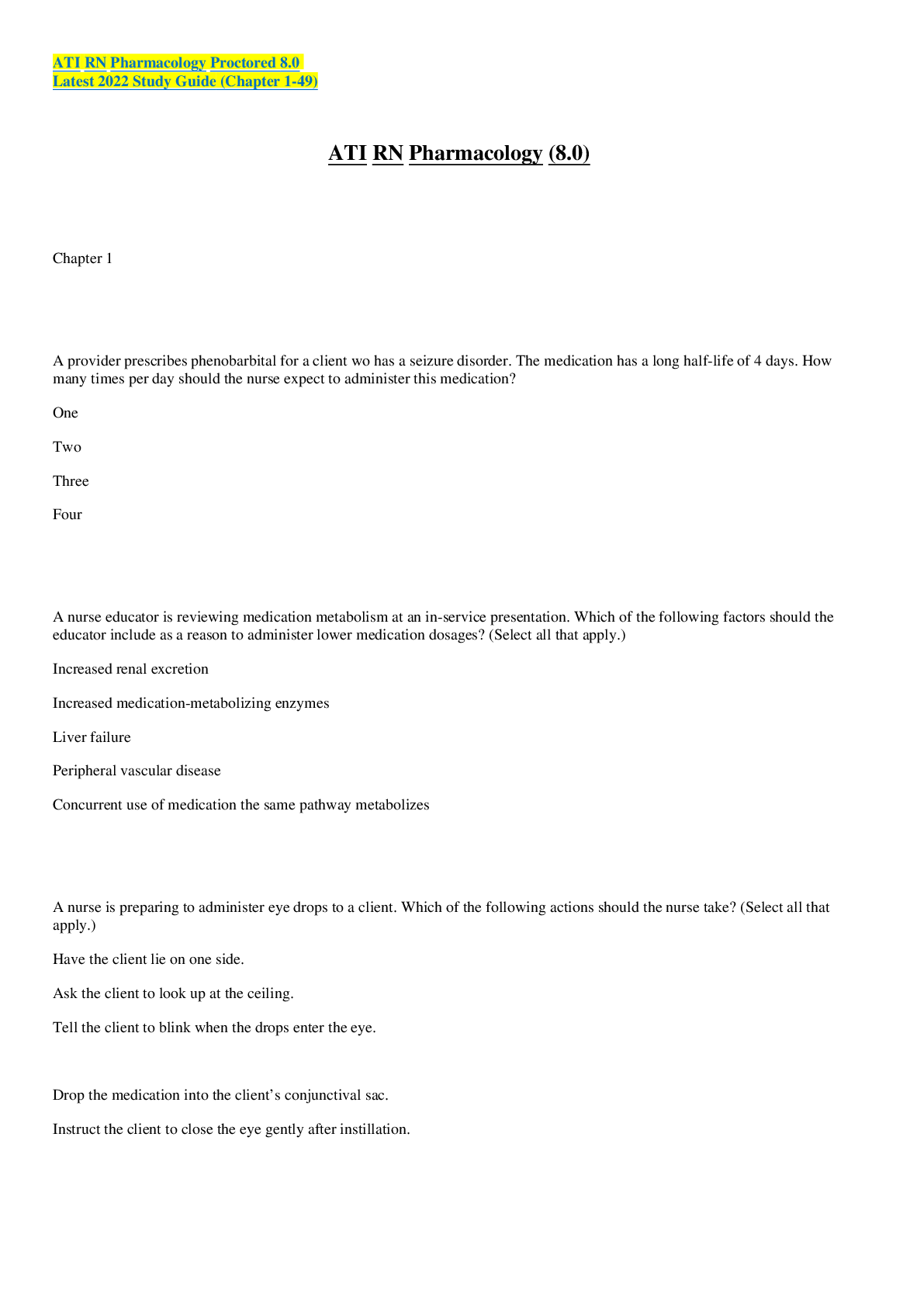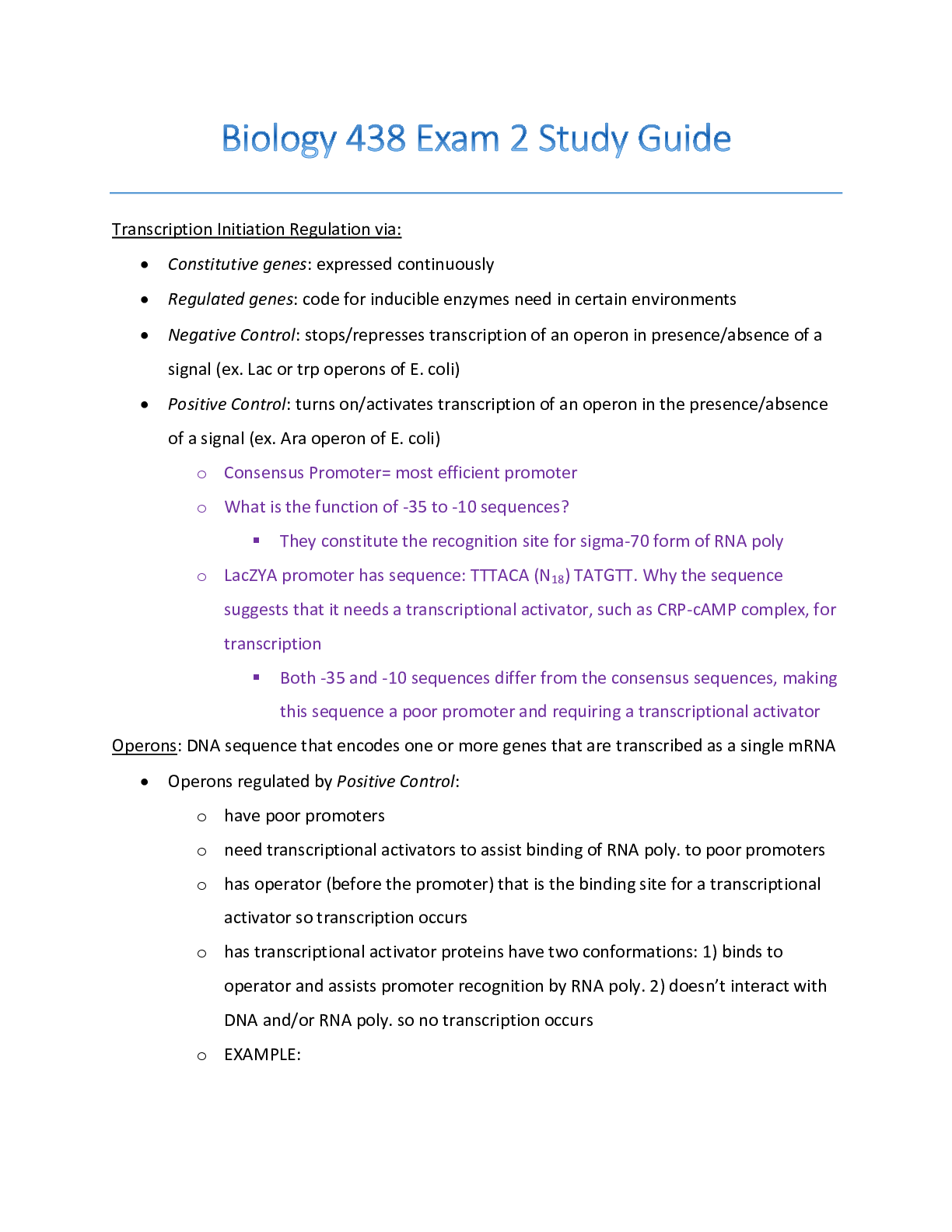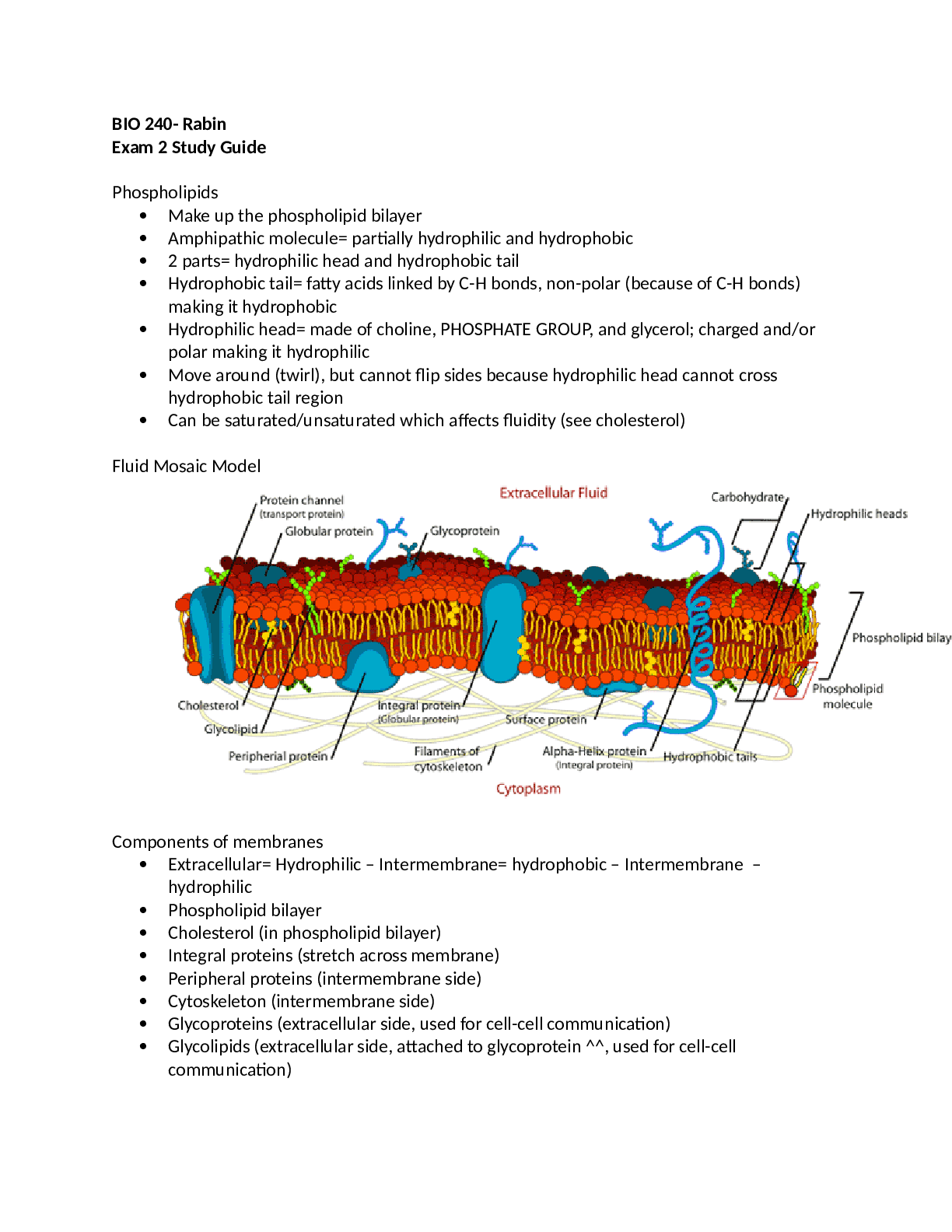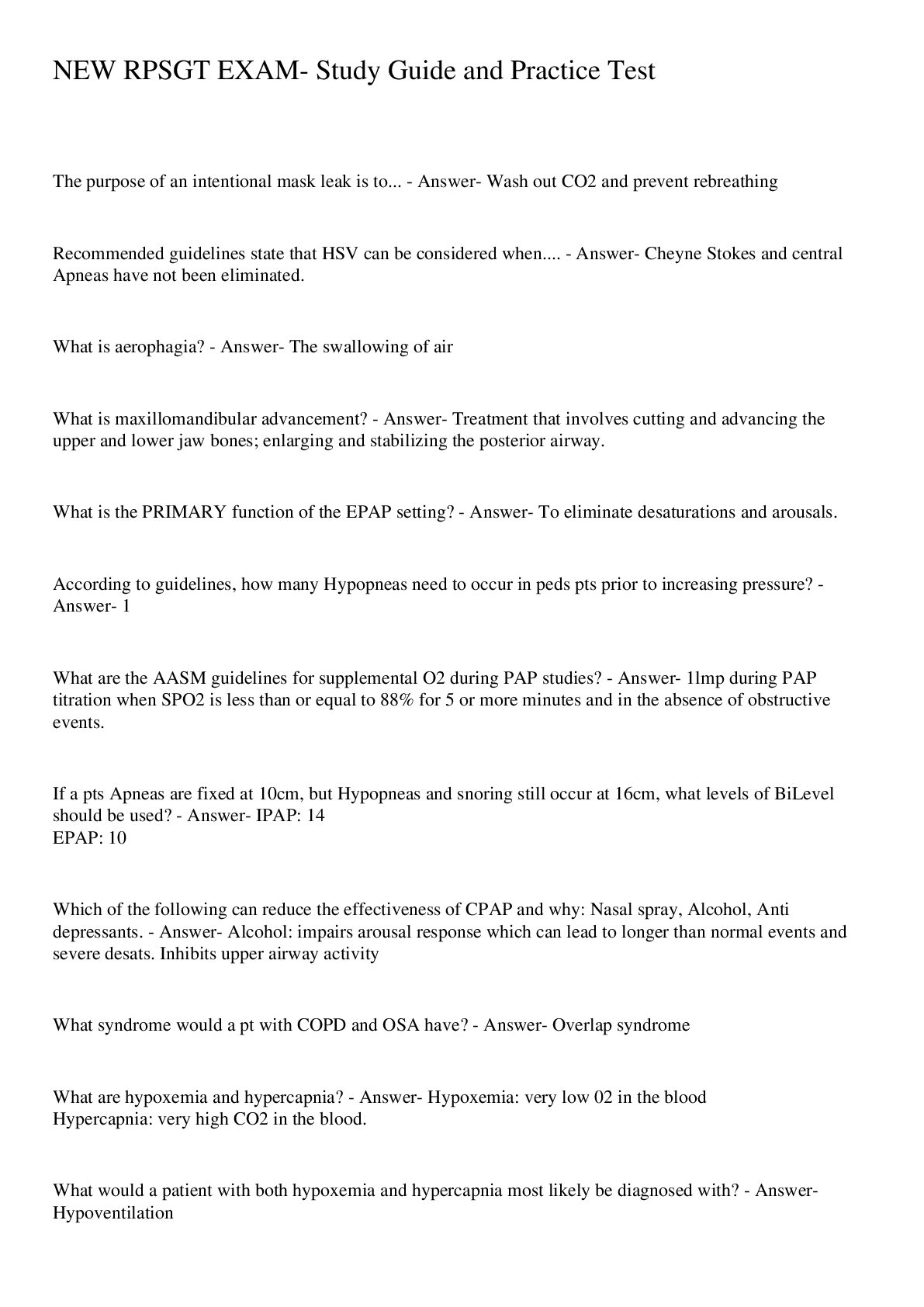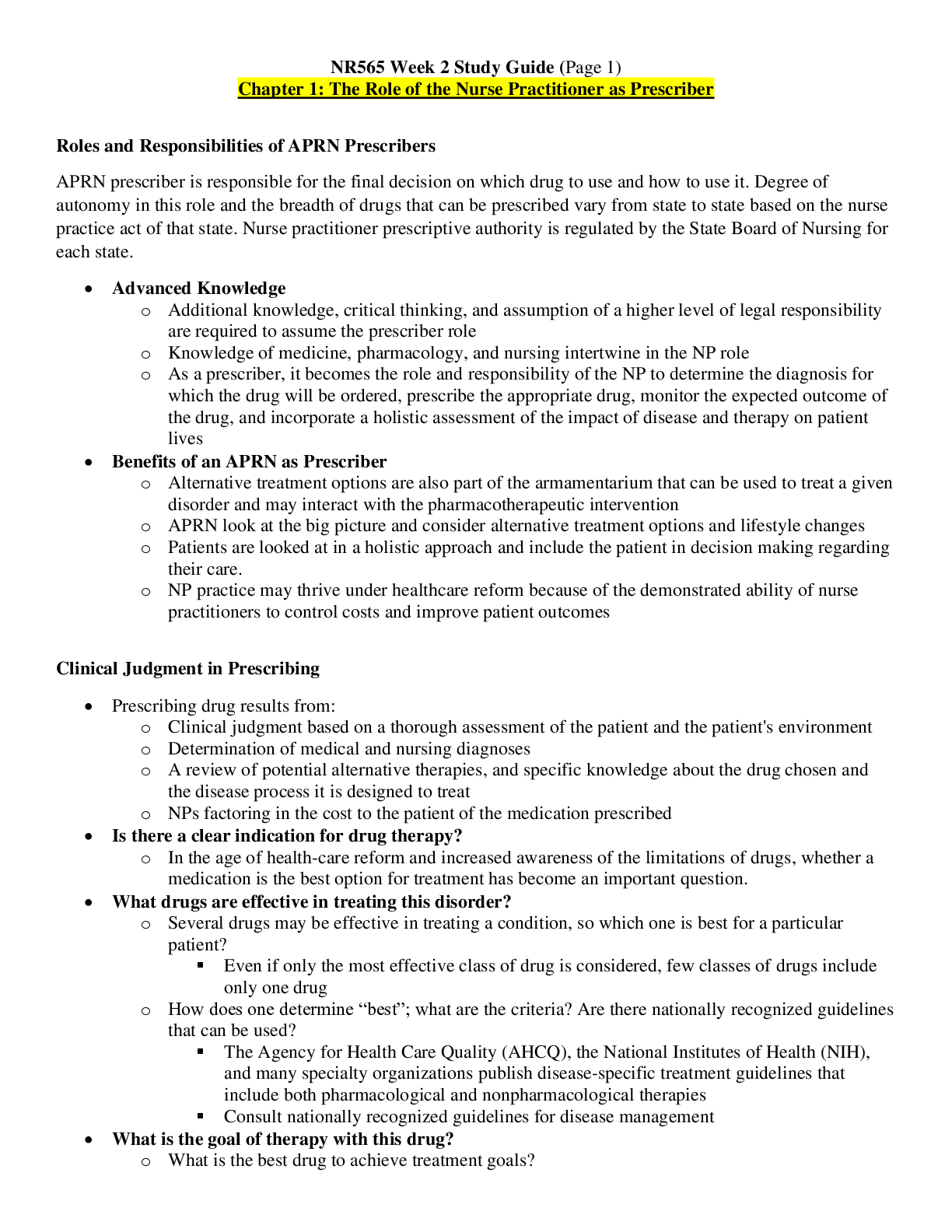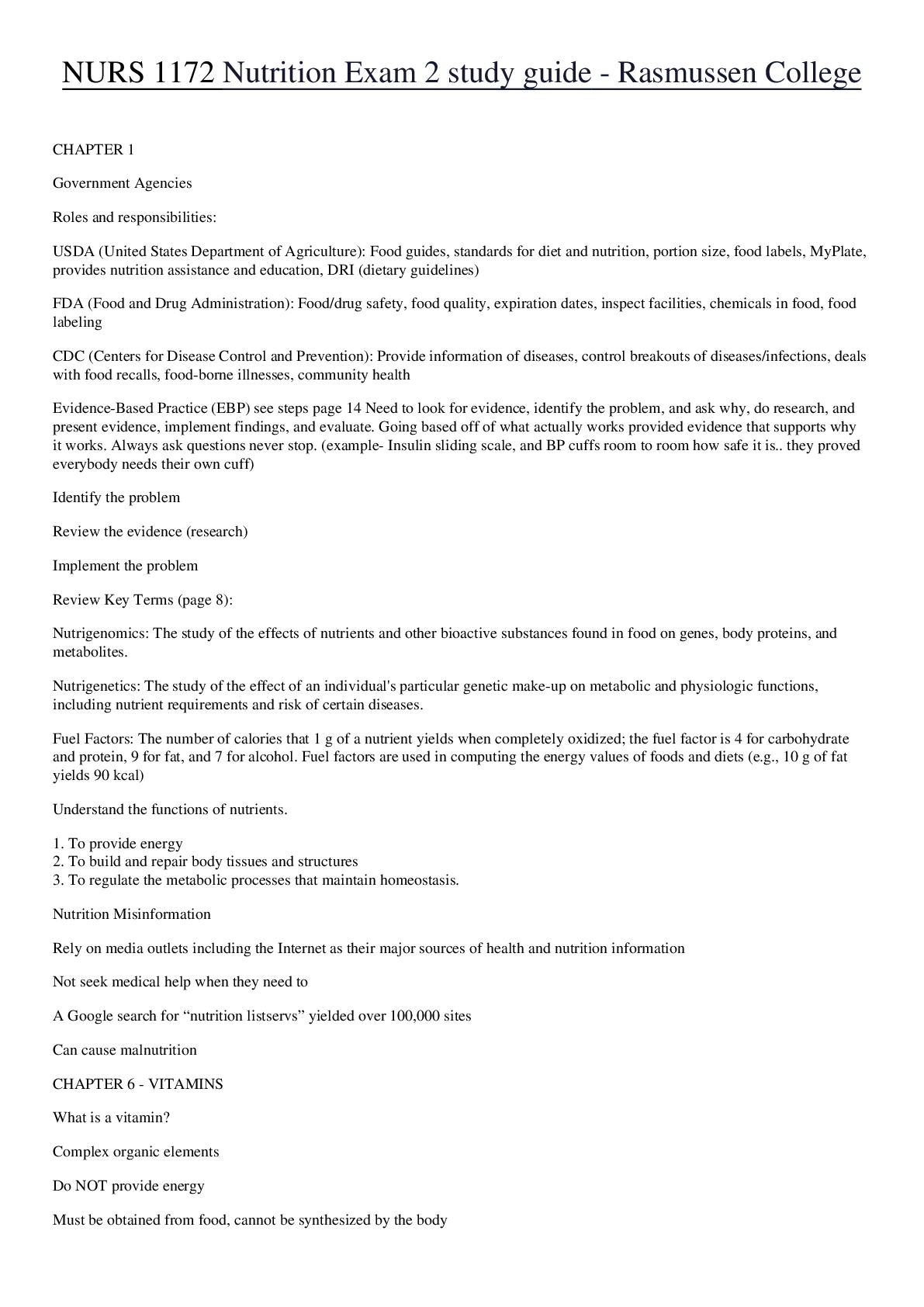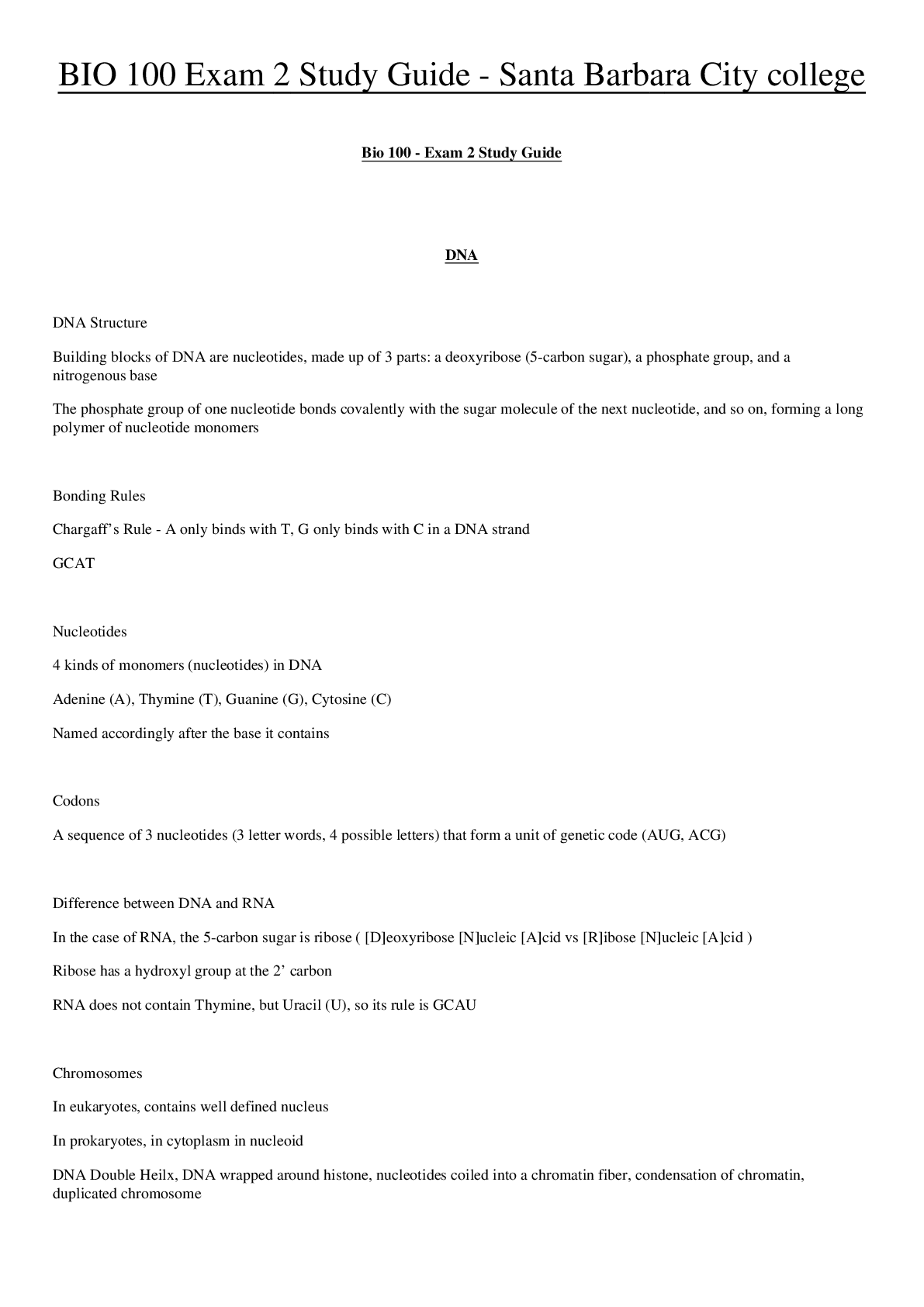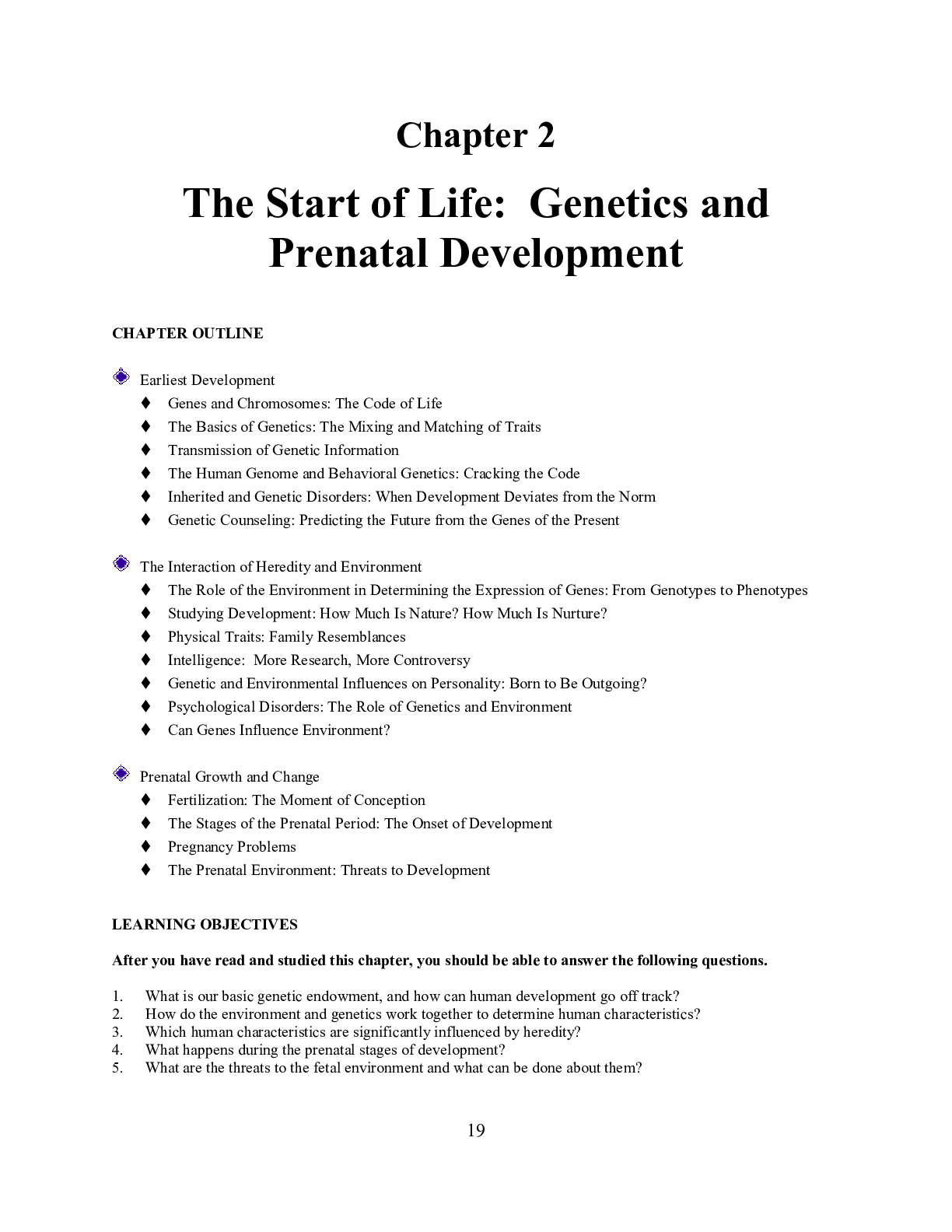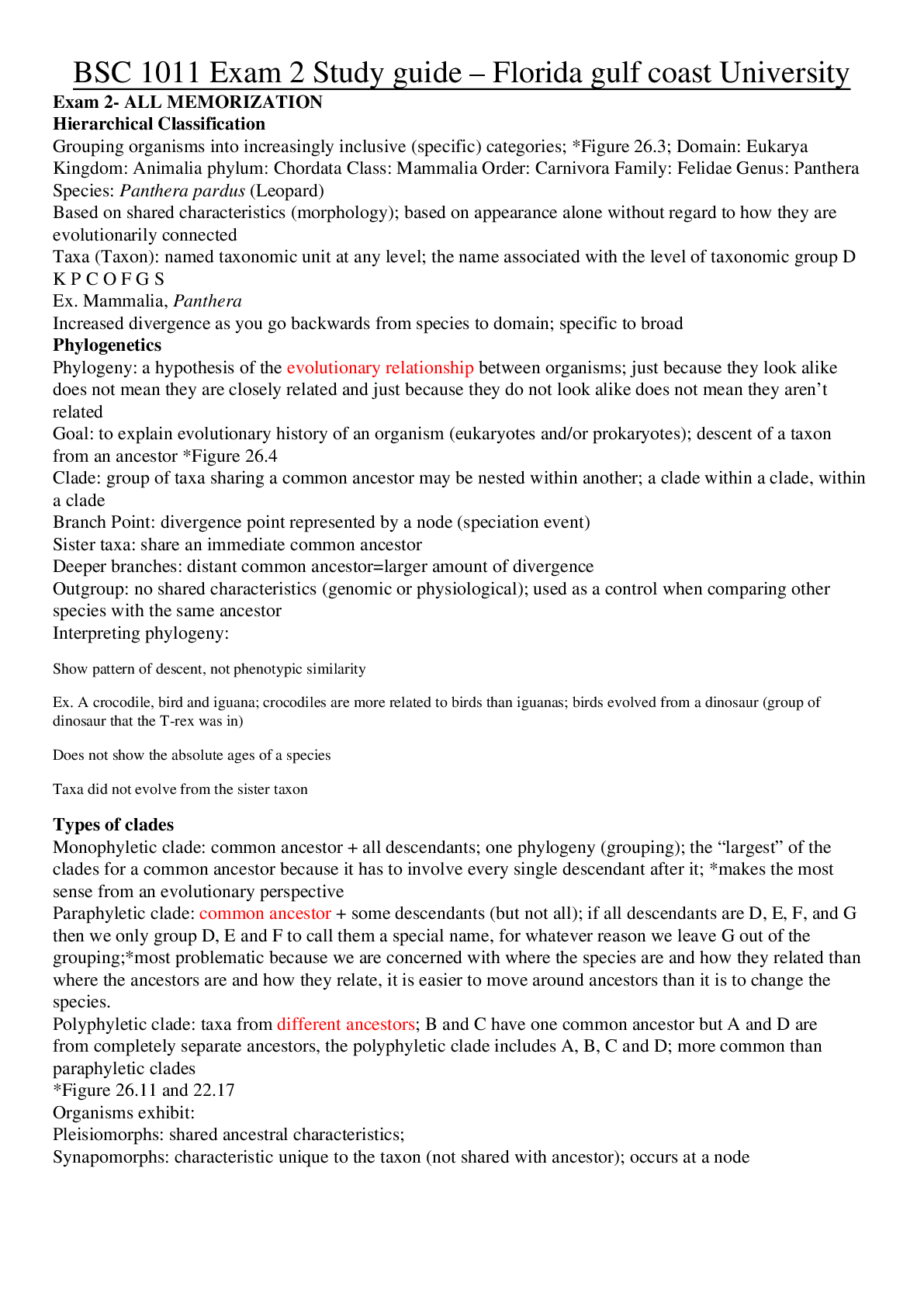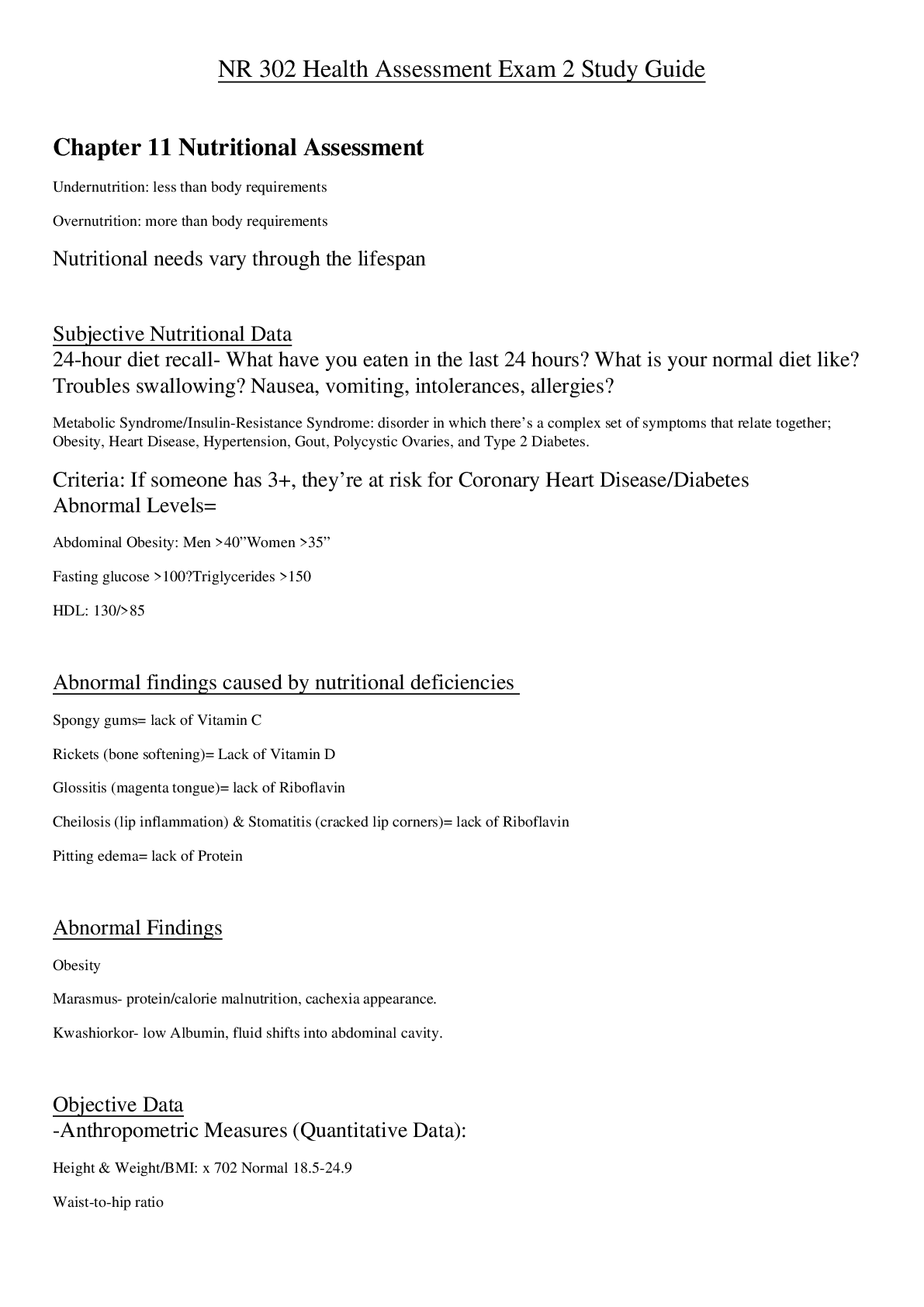Psychology > STUDY GUIDE > PSYC 165 Drugs, Behavior, and Society - University of Southern California. PSYC 165: Exam 2 Study Gu (All)
PSYC 165 Drugs, Behavior, and Society - University of Southern California. PSYC 165: Exam 2 Study Guide for Class 9-18.
Document Content and Description Below
PSYC 165: Exam 2 Study Guide Class 9: The Meaning of Addiction - Addiction is a “chronic disease of brain reward, motivation, memory and related circuitry. Dysfunction in these circuits leads to ... characteristic biological, psychological, social and spiritual manifestations.” - Before, the word addiction is used in ways such as addicted to learning, religious contemplation, etc. 1) It is a disease 2) It is not a disease: It is rather a choice. It can also naturally occur. - General Paresis: • Confusion • Disorientation • Sudden personality changes • Psychosis • Dementia DSM: Diagnostic and Statistical Manual o A book that standardizes mental illness: diagnoses based on symptoms Homeostasis Criteria 1) Tolerance 2) Withdrawal Motivational Spiral 3) Craving 4) Great deal of time obtaining, using, or recovering 5) Fail to fulfill major roles (work, school, home) 6) Persistent social or interpersonal problems caused by use 7) Important social, occupational, recreational activities given up or reduced 8) Use in physically hazardous situations 9) Use despite physical or psychological problems caused by use Self-Control Criteria 10) Using larger amounts or for longer time than intended 11) Persistent desire or unsuccessful attempts to cut down Criticisms o Categorical vs. dimensional o Heterogeneity (Many combinations) o Subjective vs. Objective criteria Limitations o Focus on consequences: Denial, situation-dependent o Wording/Structure of some criteria: Unsuccessful efforts to quit o Interpretation of some criteria: Withdrawal vs. hangover, qualifiers: “great deal” “important” o Important indices of problematic use not included: 1) Amount of use 2) Patterns of use (binging, and 3) Use to escape Class 10: Time and its Relation to Addiction Temporal Discounting/Delay Discounting: The reduction in incentive value asa function of delay. o Vd= Vi 1+Dk o Short-run motivation causes addiction Marshmallow Test o Place one marshmallow in front of four-year-old. She can eat it any time. o If she waits long enough (~15 mins) she gets two marshmallows. o Majority don’t Meta-Analysis is a statistical analysis that combines the results of multiple scientific studies. When the treatment effect (or effect size) is consistent from one study to the next, meta-analysis can be used to identify this common effect. Class 11: Loss of Control and the Prefrontal Cortex Stroop Test: A demonstration of the reaction time of a task and is often used to illustrate the nature of automatic processing versus conscious visual control. Just saying colors takes 12 secs but saying colors when there are words that read other colors takes 17 seconds Stop Signal Task: A measure of response inhibition (impulse control). The participant must respond to an arrow stimulus, by selecting one of two options, depending on the direction in which the arrow points. o When the brain or the prefrontal cortex is damaged, it’s harder to process things. o Without healthy prefrontal cortex, emotional signals get lost/less functional o The cortex establishes connections between stimuli and bodily sensations. These bodily sensations are the embodiment of emotions. Phineas Gage: o Had damage to PFC and show implications of losing this to informing emotions o Leader of group of individuals building train tracks and is in charge of explosives o Something flew into eye and took out PFC and he got infection o Memory seemed intact, couldn’t hold down job, and became a jerk because he lost emotions Bachara’s Gambling Task: o Participants are presented with 4 virtual decks of cards on a computer screen. They are told that each deck holds cards that will either reward or penalize them, using game money. o The goal of the game is to win as much money as possible. o Most healthy participants sample cards from each deck, and after about 40 or 50 selections are fairly good at sticking to the good decks. o Patients with PFC dysfunction, however, continue to persevere with the bad decks, sometimes even though they know that they are losing money overall. Class 12: Theories about why use Escalates 1) Abnormal activation of pleasure circuit a. Most researchers no longer think dopamine release in the nucleus accumbens directly cause pleasure because of timing: dopamine systems need to be activated before animals actually receive a pleasure and it doesn’t match with the idea of “euphoria” 2) Abnormal activation of teaching circuit a. A reinforce is a stimulus that increases the probability of a prior response b. Addiction is the result of the reinforcement power of particular substances c. Midbrain dopamine neuron firing as reinforcement i. Dopamine signaling is not the one-and-only driver of learning because after learning. Neurons can no longer respond to the predicted reward 3) Abnormal activation of wanting circuit a. Dopamine-deficient animals don’t seem to want much– mostly inactive b. Dopamine agonists (e.g. cocaine, methamphetamine) increase wanting response for other reward signals (e.g. sex and brain stimulation) c. Strong wanting without liking is a theory of addiction [Show More]
Last updated: 1 year ago
Preview 1 out of 8 pages

Reviews( 0 )
Document information
Connected school, study & course
About the document
Uploaded On
Apr 05, 2023
Number of pages
8
Written in
Additional information
This document has been written for:
Uploaded
Apr 05, 2023
Downloads
0
Views
46

